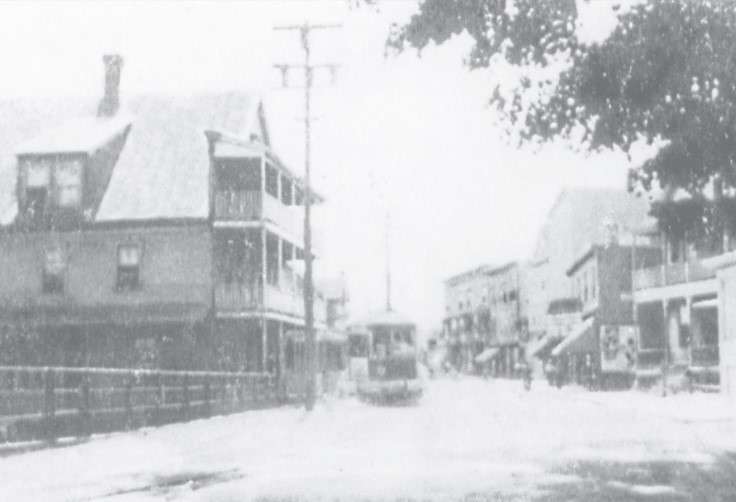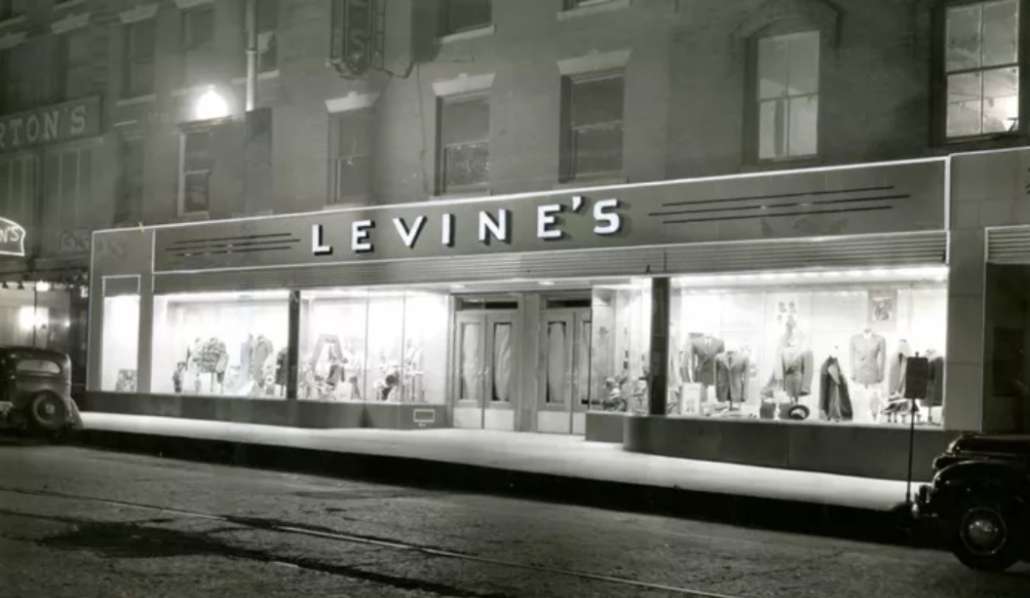FOR YOUR HEALTH: Experiencing a Higher Level of Fatigue May Predict Death in Older Adults
/0 Comments/in For Your Health/by Website Editor Study finds older people reporting feeling run down were more likely to die within the following 3 years.
Study finds older people reporting feeling run down were more likely to die within the following 3 years.
by Becky Upham
Fatigue may be a sign of an underlying health issue if it does not improve with rest and good nutrition.
How fatigued activities like walking, light housework, or heavy gardening make an older person feel may be a predictor of how likely they are to die in the next few years, according to a new study.
The research, published on January 24 in The Journal of Gerontology, is the first to establish higher levels of perceived physical fatigability as an indicator of earlier death, said lead author Nancy W. Glynn, PhD, associate professor in the department of epidemiology at Pitt’s Graduate School of Public Health, in Pittsburgh, in a release. “Conversely, lower scores indicate greater energy and more longevity.”
What Exactly Does Fatigue Mean?
Fatigue is different than feeling sleepy. Instead, it’s a feeling of tiredness or lack of energy and motivation. However, drowsiness and apathy can sometimes accompany fatigue, according to StatPearls.
Although fatigue can be a perfectly normal response to stress or a hard day of work or play, it may be a sign of an underlying health issue if it’s not improved by getting plenty of rest or good nutrition.
Participants Reported How Fatigued They Would Be From Walking, Gardening, or Watching TV
Historically, measuring fatigue has been challenging for researchers. It could be costly and require an in-person visit and dedicated space and staff.
In an effort to standardize the definition of fatigue and make it less costly, researchers at the University of Pittsburgh developed the Pittsburgh Fatigability Scale in 2011. The 10-item scale has been validated in many subsequent studies as a way to accurately capture physical and mental tiredness.
To find out if there was a relationship between reported fatigue and mortality, investigators recruited a total of 2,906 people who were enrolled in the Long Life Family Study, an international study that follows family members across two generations. The mean age of participants was 73.5 years old, 54.2 percent were women, and 99.7 percent were white.
Participants completed the Pittsburgh Fatigability Scale, which asked them to rate how much physical and mental fatigue they would experience as a result of participating in activities such as walking, light housework, watching television, hiking or biking, and hosting a social event, with 0 being no fatigue and 5 being extreme fatigue. Scores could range from 0 to 50, with a higher score indicating greater fatigability.
Subjects were followed for an average of 2.7 years until the end of 2019, thereby avoiding any increased mortality as a result of the COVID-19 pandemic. After controlling for several factors that could contribute to the likelihood of death, including depression, preexisting or underlying terminal illness, age, and gender, investigators found that participants with the highest level of reported fatigue (with a score of 25 or higher) were over twice as likely to die during the follow-up period compared with people who had less fatigue (with a score below 25).
“There has been research showing that people who increase their physical activity can decrease their fatigability score,” said Dr. Glynn, a physical activity epidemiologist. “And one of the best ways to increase physical activity — which simply means moving more — is by setting manageable goals and starting a routine, like a regular walk or scheduled exercise,” she added.
Glynn points out that this time of year is known to be the time when people make and break resolutions to be more active. “I hope our findings provide some encouragement to stick with exercise goals,” she said.
It’s Never Too Late to Start Exercising
Most adults over the age of 65 can safely exercise, even if they have a chronic illness, according to the American Academy of Family Physicians (AAFP). If you haven’t been physically active in a while or if you aren’t sure if exercise would be recommended for someone with your health conditions, check in with your doctor first.
When it comes to which type of exercise is best, experts recommend including all four types:
- Endurance activities, such as walking or dancing;
- Strength training, which can be done with body weight or a resistance band;
- Balance moves, like standing on one foot;
- Flexibility, which can be improved with yoga or stretching.
Current guidelines recommend that people ages 65 and older get at least 2.5 hours of moderate aerobic exercise (like walking) or 1 hour and 15 minutes of vigorous exercise (like jogging) every week. Include strength training at least two days a week and practice short bouts of balance and flexibility moves every day.
LIFE ON THE PLAINS: A tour of ‘The Plains’ – Part 1
/4 Comments/in Life on the Plains, Local History/by Roland D. Hallee
The Plains, circa 1930, with one of the three- story apartment houses that lined the west bank of the Kennebec River, on the left. (photo courtesy of Roland D. Hallee)
 by Roland D. Hallee
by Roland D. Hallee
Before we go into the era of growing up on The Plains, in Waterville, maybe we should take a tour of the area in our “way back machine”. This will take a little time, so plan on a couple of weeks.
Let’s start at the northern end of the south end, if that makes sense?
If we start along the river, there is the massive complex of the Lockwood-Dutchess Textile Mill, commonly called the cotton mill. It consisted of three large buildings, one on top of the hill was three stories, and the larger one at the bottom of the hill, five stories. In between, stood a smaller one story building, all three constructed of brick. The mill went “nonprofit” in the early 1950s. My grandfather worked there until his retirement in 1952. My grandmother also worked there for a short period before she married my grandfather, a story for later.
Across the street, was a building that contained the Pine View Furniture Store, and the famous “round house” behind it.
Proceeding on the west side of the street, next was a parking lot with a large barn. From what I recollect, the barn was used for storage, although I never did see the inside. The barn was eventually razed to make way for the new “Kentucky Fried Chicken” store.
Next, was an up-and-down duplex, and four unit tenement building, both owned by the Busque family. Alongside that was another apartment building, with many garages that spanned from Water St. to Green St.
Rodrigue’s Market was next in line, where you could buy everything from cigarettes to meat. The market had upstairs apartments. Ma Roy’s Tavern stood next door. (One thing I remember well is that her son was named Roy Roy.) I can still remember going there with my dad, enjoying an orange soda while he indulged in a “beverage”.
A three story apartment building was next, although it sat back aways from the street, followed by Pete’s Market, another mom and pop-style store. Why it was called Pete’s I don’t know. The owner’s name was not Pete. It was Bob Coté.
Some more houses were next, with another small market before a three story multi-unit tenement, before ascending on the world-reknowned, Chez Parée, a very popular watering hole on the weekends with live music. On the corner, where there is a parking lot now, was Leighteau’s Market.
Cross Sherwin Street, and there stood Dot’s Market. Can you believe, back then, within a 150 – 200 yard span there were five markets? Not to mention a sixth on top of Sherwin Hill, named Veilleux’s Market. Ah, but we’re not done yet.
Next to Dot’s Market was Red Star Laundry, now a parking lot near Scotty’s, which was earlier known as Dot’s. Scotty’s Pizza began its run across the street from Dot’s in the 1960s, in a building that was so small, it could not accommodate more than two customers at once. Otherwise, you had -to go outside. Across Redington St., was the Redington Street School, now the Forrest J. Pare VFW.
Then came a string of houses and apartment buildings, especially on the east side of Water St., where there was a string of three-story apartment buildings, all the way to Gold St. These apartment buildings stood on stilts that hovered over the Kennebec River. All of those tenement buildings are now gone from the river bank, razed back in the ‘60s. Out of site, some of the foundations are still there today. There, at the end of the row of apartment buildings, was Picher’s Furniture Store, directly across from Gold St.
On the east side of the street, almost diagnolly across from Scotty’s, stood the home of Edgar and Yvonne Poulin, Edgar being a well-known radio celebrity in Waterville (WTVL), whose Sunday radio program was called La Melodie Francais, and maternal grandparents to The Town Line’s business manager, Claire Breton. Edgar would play French music from Canada, to which my grandfather would dance while sitting in his chair.
Let’s go back across the street, to the west side. Not far from the Redington St. School, was, you guessed it, another market. I don’t recall the name of that one. Then, a few more houses before we hit the part where the Maine State Theater stood, and Daviau’s Drug Store on the corner of Gray St. It was the forerunner of LaVerdiere’s Drug Stores, and pretty much carried everything you will find in a CVS or Walgreen’s today.
Then, there were more houses and apartments to the corner of Gold St. Most of these dwellings are now gone.
So, we’ve traveled a ways this week along the northern stretch of The Plains. The Gold Street area is about the halfway point.
This part of Waterville, one of the oldest settled areas, was mostly occupied by the Franco-American community. People who immigrated from Canada to work in the mills, in search of a better life. As you can tell so far, and will learn more next week, this section of Waterville was pretty much self-sufficient. In those days, there was no need to venture “downtown”, unless you were going to a clothing store. Pretty much all you needed was right there on The Plains.
And, besides, not many had cars back then.
Next week: From Bilodeau’s Garage, to LaVerdiere’s Market.
SCORES & OUTDOORS: Was it a little early for fireflies in May?
/0 Comments/in Scores & Outdoors/by Peter Cates by Roland D. Hallee
by Roland D. Hallee
A reader recently told me they saw some fireflies recently, and asked whether it is early for them.
I guess it all depends on a number of factors.
Most people associate fireflies with soft summer evenings, but late in February and into March it is possible to see winter dark fireflies glowing in the woods. The larvae and pupae have the ability to bioluminescence, but lose the necessary organs as they become adults during their two-year lifespan.
But the adults emerge out in the warmer late spring, early summer, when it’s warm and humid. And that’s when we usually see the flashing with the adults, the nocturnal species; we’re probably more aware of those. It’s usually June and July when they’re mating and very active as adults.
Larvae are predators and can be found in decaying logs, especially pine; they tend to live in colonies because the habitat is good. So keep a look out and you may see the glow high up on trees or lower down on fallen snags.
Fireflies are attracted to high grasses and shrubbery, and they rest on tall blades of grass during the day. Mowing too often can actually reduce the number of fireflies in your yard in general.
While some fireflies produce larvae that glows, called a glow worm, the fireflies in Maine do not. Technically, Maine fireflies are called a Big Dipper Fireflies. Fireflies use their blinking lights to attract a mate, but they also communicate other messages, like claiming a territory.
Do adult fireflies eat mosquitoes or other insects? Well, the eating habits of fireflies generally differ from those of the predatory larvae. Most of the adult fireflies feed on dew droplets, pollen, or nectar from flowers, but there are some exceptions. Some of the species are known to eat smaller insects
As a child, when we visited family in Canada, we used to go to a camp on the lake. Coming from a generation that believed “children should be seen, and not heard,” we were relegated to “go find something to do,” when the adults got together. We would go catch fireflies. Catch fireflies carefully, treat them gently and release them into the wild again when you’re done, and you’ll be able to enjoy these fascinating creatures without causing any harm.
These fireflies are a family of insects in the beetle order, with more than 2,000 described species, many of which are light-emitting. They are soft-bodied beetles commonly called fireflies, glowworms, or lightning bugs for their conspicuous production of light, mainly during twilight, to attract mates. Light production originated as an honest warning signal that the larvae were distasteful; this was co-opted in evolution as a mating signal in the adults. In a further development, female fireflies mimic the flash pattern of other species to trap their males as prey.
Fireflies are found in temperate and tropical climates. Many live in marshes or in wet, wooded areas where their larvae have abundant sources of food. While all known fireflies glow as larvae, only some adults produce light, and the location of the light organ varies among species and between sexes of the same species. Fireflies have attracted human attention since classical antiquity; their presence has been taken to signify a wide variety of conditions in different cultures, and is especially appreciated aesthetically in Japan, where parks are set aside for this specific purpose.
Most fireflies are distasteful to vertebrate predators, as they contain a steroid similar to the those found in some poisonous toads.
In the United States, one of the most famous sightings of fireflies blinking in unison occurs annually near Elkmont, Tennessee, in the Great Smoky Mountains, during the first weeks of June. Tourists from all over the U.S. make the annual pilgrimage there to witness this marvelous natural display.
With all this, what are their interactions with humans?
While fireflies do contain toxins, they are harmless to humans unless eaten in massive quantities. Whether you know them as Lightning Bugs or Fireflies, these are beneficial insects. They don’t bite, they have no pincers, they don’t attack, they don’t carry disease, they are not poisonous, they don’t even fly very fast.
Throughout history, fireflies have put on some spectacular shows for humans to watch. Unfortunately, their numbers are in decline. So, if you should be privileged enough to witness a nighttime performance, enjoy!
Roland’s trivia question of the week:
Who was the last Boston Red Sox pitcher to hurl a no-hitter?
LIFE ON THE PLAINS: An icon on lower Main Street
/0 Comments/in Life on the Plains/by Roland D. Hallee
 by Roland D. Hallee
by Roland D. Hallee
This is the beginning of a series of articles on growing up on The Plains, in Waterville, in the 1950s and 1960s. The Plains was a flat area along the Kennebec River that stretched from the end of lower Main St., south toward Grove St., and slightly beyond to Couture softball field. I was born into a French-Canadian Catholic family, in the south end of Waterville.
But, before we get into that, there was one significant chapter in my growing up that must be acknowledged.
Just north of The Plains, at the most southern end of Main St., stood an iconic landmark known, pretty much, nationwide – The Levine’s Store for Men and Boys.
In my growing up years, there wasn’t a stitch of clothing I owned that did not come from Levine’s. Back in those days, there was no Walmart, Kohl’s or Target. When you needed clothing, you went to the local haberdashery, picked out your item, had them fitted, and tailored to your size and specifications, at no extra charge.
One of the main reasons we went to Levine’s – there were other clothing stores, Stern’s Department Store, and Dunham’s of Maine to name a couple – but for our family, it was Levine’s.
My mother’s youngest brother, Leonel “Nel” Libby was a sales clerk at the store, and he was our go-to-guy. Anytime, anyone in our family walked through the front door, we were not approached by other sales clerks, but they would go looking for “Uncle Nel” – You could hear them yelling for “Libby” throughout the store.
I remember when I was about 10 years old, my father took me to Levine’s to buy my first suit. Actually, it was more like a sports jacket. It was a red checkered coat that was worn with black pants. Boy, did I feel like I was the cat’s meow with that snappy jacket. Even took it on trips to Canada.
Levine’s had the latest fashions.
During my sophomore year in high school, I was finally able to buy my own clothes after I got a job working in the mailroom at the Morning Sentinel. The rage at the time were khaki “chinos”. That was something my mother would not buy for us. We always wore corduroy or flannel pants.
How proud I was of those chinos. I now looked like one of the guys in school. Even the girls noticed.
Until the day came when they went into the laundry. Before I go any further, you have to understand my mother was a very meticulous person. Never any dust on the furniture, floors that shined all the time, and laundry that was ironed perfectly before being put away.
The style for wearing chinos back then was more like boot cut jeans of today. No creases. Well, my mother went and ironed them, putting a clean, crisp pleat in the legs. Destroyed! I couldn’t wear those to school again. Even though they came from Levine’s.
Levine’s store, founded in 1891, has been closed since 1996, as have the other two stores. Even my Uncle Nel has passed on. Something is definitely missing downtown.
So, descendants of William Levine, founder, and his sons Lewis “Ludy” and Percy “Pacy”, have come together to remember the store and its location in Waterville. After moving the store to its most recent location on lower Main St., early in the 20th century, the store expanded in the 1960s to the former site of the Crescent Hotel, which was located on the traffic circle that existed in the middle of Main St., Water St., Spring St., and Bridge St.
Levine’s Store for Men and Boys served as a beacon of business development and community gathering in downtown Waterville for 105 years. After closing its doors in 1996 the building lay dormant until it was razed. location is now the site of the newly-built Lockwood Hotel, which is owned by Colby College. Levine’s was internationally known. Colby students and satisfied customers spread word across the globe about Levine’s. Thus, Levine’s Store is inescapably tied to Colby College in putting Waterville on the international map.”
Descendants of the Levine family have created a fundraiser to preserve the family’s legacy with a plaque to be erected in the southern park.
The GoFundMe organizer says: “It is time to memorialize and honor the legacy of Levine’s Store and the memories of Ludy, Pacy, and their nephew Howard Miller. In partnership with the Mayor of the City of Waterville and with Colby College, the descendants of Ludy, Pacy and Howard have banded together to honor the store and the Levine family with parks on both sides of the hotel, and with a special naming of the hotel’s conference room. An exceptional dedication ceremony is currently being planned for mid-July 2022. Colby College is funding the development of the memorials that will live in the northern park and in the conference room. It is the family’s responsibility to fund the memorial for the southern park.”
To view the GoFundMe, please visit: https://gf.me/v/c/z4lq/levines-park.
REVIEW POTPOURRI: Conductors Bruno Walter and George Szell
/0 Comments/in Review Potpourri/by Peter Cates by Peter Cates
by Peter Cates
Back during eighth grade in 1964, I was hungrily eager to hear every record of classical music that I could beg, borrow, buy, barter for; and one neighbor was kind enough to loan the Arturo Toscanini/NBC Symphony RCA Victor Red Seal LP of Beethoven’s 5th and 8th symphonies, that I auditioned on another neighbor’s hi-fi which was quite superior in sound to the $32 manually operated phonograph I owned.
I was already quite familiar with the 5th Symphony via an old Columbia Masterworks set of five 12-inch 78s, conducted by Bruno Walter (1876-1962) with the New York Philharmonic.
I remember the black and white photo of Walter raising his arms in the air and conveying, in his stern eyes, that he meant business; Leonard Bernstein called him one of the great saints of music with a sweet gentle spirit and wearing silk gloves but beneath those silk gloves was an iron fist and a sneaky snakiness in Walter’s ability to look out for number one.
But Walter was a truly great conductor on the same level as his close friend Toscanini (1867-1957) and his recording of the 5th had a combination of dramatic power and nicely contrasting poetry while Toscanini’s performance had the excitingly riveting volatility of a sledgehammer.
Back to my first encounter with the 8th Symphony. Toscanini and his players tore into the first movement and fully communicated its growling jubilation, Beethoven being a 100 percent manic depressive.
This symphony had its first performance in 1812 in Linz, Austria, where the composer was visiting his brother Johann, enjoying his hospitality and, at the same time, trying to break up a relationship Johann was having with a woman whom Beethoven considered a lowlife. The situation and how it was resolved makes for hilarious reading.
The second movement is a perky dance with the bassoon taking center stage with its staccato notes.
The third movement is labeled as a Menuet but its beauty is a passionate outpouring of the heart, as opposed to a graceful elegant dance, with some very eloquent, almost heavenly writing for the strings.
The final movement is a vivacious highly spirited romp for the entire orchestra.
A similarly exciting performance of the 8th was an early 1960s one conducted by the arch perfectionist, SOB, taskmaster George Szell (1897-1970) with the Cleveland Orchestra while another one from 1957 with Andre Cluytens (1905-1967) conducting the Berlin Philharmonic has a more relaxed sedate quality that works beautifully, this Maestro being one who was quite underrated during his own lifetime.
While the 7th Symphony is a colossal masterpiece with the much shorter 8th seeming to a number of listeners anticlimactic, Beethoven himself considered the 8th immensely superior to the 7th.
Beware of energy saving scammers
/0 Comments/in AARP Scam Alert, Community/by Website Editor
image: AARP
Summer is coming, and rising temperatures mean high air conditioning bills. Scammers have devised a new con that claims to “save you money.” Con artists, posing as local government and utility company representatives, are offering phony home energy audits and services. Here’s what you need to know to spot the scam.
How the scam works
You are contacted over the phone or in person at your front door. The “representative” introduces themselves as working for your utility company or with the energy division of your local government. They may even show you identification, but it isn’t real.
Scammers inform you that you could be saving big on your energy bill. Some con artists will even insist on a tour of your home. These individuals may offer to install filters, thermostats, or other energy equipment to lower your bill, or they may say simply you are eligible to pay less. In either case, they’ll ask you to sign a contract and possibly even run a credit check. They will also ask for billing information, including your debit or credit card number.
In the end, you won’t receive any discount on your energy bill or any services. The equipment you were promised won’t be delivered. That’s because this “home energy audit” is a scam. You may, however, be charged the fees mentioned in the contract, and your personal information will be in the hands of a scammer.
How to avoid impersonation scams
Don’t agree to anything on the spot. No matter how good the deal seems or how urgent the individual makes their offer seem, take time to do your research. Tell the person you need time to think about their offer and hang up or close the door. Scammers may tell you you’ll miss out on the deal, but taking immediate action isn’t worth getting scammed.
Go to the source. Contact your local government agency or your utility company directly to confirm whether they really are offering energy audit services. This is the quickest way to find out if you are dealing with an impostor.
Get help. If you aren’t sure about what you’re being offered, talk to someone. Call a trusted friend or family member or contact your local BBB to find out if it you are dealing with a scam.
For more information
Learn more ways to protect yourself from scams by reading the BBB’s tip on avoiding impostor scams. You can find additional information at BBB.org/AvoidScams.
Become a skilled scam spotter by visiting BBB.org/SpotaScam and report any suspicious activity to BBB.org/ScamTracker.
SCORES & OUTDOORS: Things you see in the dark
/0 Comments/in Scores & Outdoors/by Roland D. Hallee by Roland D. Hallee
by Roland D. Hallee
Well, today we have an interesting question.
A supporter sent an email to me stating they had seen a wolverine crossing the Bog Road, in Vassalboro, on their way home from the Vassalboro town meeting last Monday night. After looking online, this person is sure it was a wolverine.
The wolverine is the largest land-dwelling species of the family Mustelidae (otters, weasels, badgers, ferrets, martens, minks). It is a muscular carnivore and a solitary animal. The wolverine has a reputation for ferocity and strength out of proportion to its size, with the documented ability to kill prey many times larger than itself.
The wolverine is found primarily in remote reaches of the Northern boreal forests and subarctic and alpine tundra of the Northern Hemisphere, with the greatest numbers in Northern Canada, the U.S. state of Alaska, the mainland Nordic countries of Europe, and throughout western Russia and Siberia. Its population has steadily declined since the 19th century because to trapping, range reduction and habitat fragmentation. The wolverine is now essentially absent from the southern end of its range in both Europe and North America.
Anatomically, the wolverine is an elongated animal that is low to the ground. With strong limbs, broad and rounded head, small eyes and short rounded ears, it most closely resembles a large fisher. Though its legs are short, its large, five-toed paws with crampon-like claws and plantigrade posture enable it to climb up and over steep cliffs, trees and snow-covered peaks with relative ease.
The adult wolverine is about the size of a medium dog. Wolverines have thick, dark, oily fur which is highly hydrophobic, making it resistant to frost. This has led to its traditional popularity among hunters and trappers as a lining in jackets and parkas in Arctic conditions. A light-silvery facial mask is distinct in some individuals, and a pale buff stripe runs laterally from the shoulders along the side and crossing the rump just above a bushy tail. Some individuals display prominent white hair patches on their throats or chests.
Like many other mustelids, it has potent anal scent glands used for marking territory and sexual signaling. The pungent odor has given rise to the nicknames “skunk bear” and “nasty cat.” Wolverines, like other mustelids, possess a special upper molar in the back of the mouth that is rotated 90 degrees, towards the inside of the mouth. This special characteristic allows wolverines to tear off meat from prey or carrion that has been frozen solid.
Wolverines are considered to be primarily scavengers. A majority of the wolverine’s sustenance is derived from carrion, on which it depends almost exclusively in winter and early spring. Wolverines may find carrion themselves, feed on it after the predator (often, a pack of wolves) has finished, or simply take it from another predator. Wolverines are also known to follow wolf and lynx trails, purportedly with the intent of scavenging the remains of their kills. Whether eating live prey or carrion, the wolverine’s feeding style appears voracious, leading to the nickname of “glutton”. However, this feeding style is believed to be an adaptation to food scarcity, especially in winter.
The wolverine is also a powerful and versatile predator. Its prey mainly consists of small to medium-sized mammals, but the wolverine has been recorded killing prey such as adult deer that are many times larger than itself. Prey species include porcupines, squirrels, chipmunks, beavers, marmots, moles, gophers, rabbits, voles, mice, rats, shrews, lemmings, caribou, roe deer, white-tailed deer, mule deer, sheep, goats, cattle, bison, moose, and elk. Smaller predators are occasionally preyed on, including martens, mink, foxes, Eurasian lynx, weasels, [coyote, and wolf pups. Wolverines often pursue live prey that are relatively easy to obtain. Their diets are sometimes supplemented by birds’ eggs, birds (especially geese), roots, seeds, insect larvae, and berries.
Wolverines frequently cache their food during times of plenty. This is of particular importance to lactating females in the winter and early spring, a time when food is scarce.
Wolves, American black bears, brown bears, cougars, and golden eagles are capable of killing wolverines, particularly young and inexperienced individuals. Wolves are thought to be the wolverine’s most important natural predator. Armed with powerful jaws, sharp claws, and a thick hide, wolverines are remarkably strong for their size. By far, their most serious predator is the grey wolf.
Wolverines live primarily in isolated arctic, boreal, and alpine regions of northern Canada, Alaska, Siberia, and Fennoscandia; they are also native to European Russia, the Baltic countries, the Russian Far East, northeast China and Mongolia. In the Sierra Nevada, wolverines were sighted near Winnemucca Lake in spring 1995 and at Toe Jam Lake north of the Yosemite border in 1996; and later photographed by baited cameras, including in 2008 and 2009, near Lake Tahoe. According to a 2014 U.S. Fish and Wildlife Service publication, “wolverines are found in the North Cascades, in Washington, and the Northern Rocky Mountains, in Idaho, Montana, Oregon and Wyoming. Individual wolverines have also moved into historic range in the Sierra Nevada Mountains of California and the Southern Rocky Mountains of Colorado, but have not established breeding populations in these areas.
Most New World wolverines live in Canada and Alaska. However, wolverines were once recorded as also being present in Colorado, areas of the southwestern United States (Arizona and New Mexico), the Midwest (Indiana, Nebraska, North and South Dakota, Ohio, Minnesota, and Wisconsin), New England (Maine, New Hampshire, Vermont, and Massachusetts) and in New York and Pennsylvania.
Many North American cities, teams, and organizations use the wolverine as a mascot. For example, the US state of Michigan is, by tradition, known as “the Wolverine State”, and the University of Michigan takes the animal as its mascot. There have also been professional baseball and football clubs called the “Wolverines”.
Marvel Comics character James “Logan” Howlett was given the name “Wolverine” because of his short stature, keen animal senses, and ferocity.
The wolverine is prevalent in stories and oral history from various Algonquian tribes and figures prominently in the mythology of the Innu people of eastern Québec and Labrador.
So, now the question is: are there wolverines in Maine? According to the Maine Department of Inland Fisheries and Wildlife, wolverines are not found in New England, although they did at one time. But fishers are, and in the right light, they could look like small wolverines. What did that person see that night? In the dark, it could possibly have been a fisher, which bears a resemblance to a small wolverine.
Roland’s trivia question of the week:
Which Boston Red Sox player was the first rookie in history to gather both the Rookie of the Year, and Most Valuable Player awards, in the same year?
FOR YOUR HEALTH: Keeping Your Kids Covered Finding Health Insurance Post-Graduation
/1 Comment/in For Your Health/by Website Editor(NAPSI)—When your children graduate, there are two things you should know. First, congratulations. Second, consider their health insurance needs. Perhaps this is the last thing you ask yourself but it may be among the most significant. About one in five people in their 20s do not have health insurance, according to recent studies. However, one unexpected illness or accident could have long-lasting health and financial consequences.
“Choosing the right health coverage for your child may seem difficult as many people have never shopped for their own health insurance or worry they cannot afford it,” said Mark Smith, president of HealthMarkets Insurance Agency, one of the largest health insurance agencies in the United States. “A wide range of coverage options are available to meet your child’s unique care needs and financial situation post-graduation.”
And now is the time to start. Many colleges and universities require undergraduate and graduate students to have health care coverage while enrolled. While some may have coverage under parents’ health insurance, others choose health plans offered by health insurers through the school. Students have until their plan expiration dates, which vary by plan, to enroll in new ones. So “Step One,” know when that is.
Health Care Coverage Guidance and Enrollment Support
Families can find support through health care marketplaces, insurance carriers, insurance brokers and other licensed insurance agents to help determine what plan is best for them.
For example, GetCovered, powered by HealthMarkets, is a free service that provides guidance for people who need health coverage. Call (877) 650-1065 or visit www.getcovered.com/graduate to get started. Working with licensed insurance agents, individuals can learn what they are eligible for that best meets their needs. Agents can also help them enroll in these plans, where they are able.
Questions to Ask
To find the right coverage, it’s important to know what’s available, what to ask and what information is needed to enroll. To narrow the options, know:
•When your child’s current coverage ends?
•Is coverage under my plan an option? Under the Affordable Care Act’s “Age 26” rule, parents and guardians may maintain or add their children to their plans until their 26th birthday or another date that year, if you are enrolled, and additional premiums are paid. Go to https://www.hhs.gov/healthcare/about-the-aca/young-adult-coverage. Also, be sure to check state regulations as some have extended eligibility beyond age 26.
•What benefits does my child need or want?
•What can we afford? Think about what portion of his or her monthly budget can be used for health coverage or other insurance. Young adults may be eligible for additional options based on their specific financial situation.
Health Coverage Options
If coverage under the “Age 26” rule is not an option, consider:
•Medicaid/Medicare—While Medicare coverage is primarily available to individuals over age 65, Medicaid eligibility is based on income, disability, and other circumstances.
•Individual exchange/marketplace plans—These ACA plans are available through federal or (Affordable Care Act) state enrollment sites. Based on income, your graduate may be eligible for plan subsidies—making one of these plans more affordable. Graduation would be a “qualifying life event” to enroll in an ACA plan outside of the annual Open Enrollment Period.
•Short-term plans—Short-term limited duration insurance plans provide temporary coverage to bridge the gap between longer-term insurance coverage. These plans have a fixed duration of a few months to even several years and offer different levels of coverage than ACA plans.
“Health coverage decisions can be made simpler—and there are resources to help,” Smith said. “Whether your family chooses to do its own research and enrollment or engage outside services, determining what your graduate may need and can afford will help you find health coverage that ensures your child has access to care now.”
REVIEW POTPOURRI: First Lady Elizabeth Monroe
/0 Comments/in Review Potpourri/by Peter Cates by Peter Cates
by Peter Cates
First Lady Elizabeth Monroe
Former 5th First Lady Elizabeth Kortright Monroe (1768-1830) was one of the most anti-social FLs to live at the White House during her eight years (1817-1825) while her husband James Monroe (1758-1831) ushered in what was known as the Era of Good Feelings, that period of “happiness” sometimes referred to by cynical misanthropes as the Era of Good Stealings, that story for another week.
One of the most lively chapters in Christine Sadler’s 1963 America’s First Ladies concerns the quiet Mrs. Monroe:
“She was forty-eight years of age when her husband became president and she had lived in Washington as a Cabinet wife for seven years without, it was said, making neither friends nor enemies. ‘The Monroes are perfect strangers, ‘ wailed Margaret Bayard Smith, the capital city’s most ardent note taker during the period and the one most often quoted, ‘not only to me but to all the citizens.
“The story of Elizabeth is almost entirely the story of her husband, on whom she was unusually dependent. It was an arrangement which apparently suited him perfectly and which he perhaps had fostered. She was only seventeen when he married her in New York City on February 16, 1786, while he was a member of the Continental Congress. He was twenty-seven and a veteran of the Revolutionary War, with a scar to prove it, and had studied law under his idol and mentor, Thomas Jefferson. One of his Virginia colleagues in the Congress described Elizabeth as ‘the smiling little Venus’ when she and her tall husband departed for a week-long honeymoon on the outer reaches of Long Island. ”
One very noble deed of Mrs. Monroe occurred when her husband was George Washington’s Minister to France in 1794. Adrienne Lafayette, wife of the Marquis who had provided much help with French troops during the last years of the American Revolution, was in prison with her two daughters and awaiting execution by the guillotine (She had already lost her mother, grandmother and sister to the blade.).
All Americans in France were under strict orders to maintain strict neutrality, even though Washington himself cherished Lafayette like a son. The Monroes decided otherwise and devised a plan.
Dressing in the finest apparel and the carriage decorated in full U.S. insignia, Elizabeth arrived at the prison with her entourage in all innocence to pay a visit to her dear friend and so charmed those powers that be that Madame Lafayette and her daughters were released from prison within a few days and given passports out of the country.
Upon the Monroes replacing the Madisons in the White House, they lived a very quiet life and pretty well shunned most Washington society, entertaining very small groups of family and friends.
Their older daughter Eliza and her husband George Hay (He was the prosecutor in the trial of Thomas Jefferson’s former vice-president Aaron Burr for treason) came to live with them at the White House and, with her mother’s blessing, she assumed most of the responsibilities for the limited social calendar in a most unfortunately arrogant manner. Furthermore, the First Lady was suffering from poor health.
Meanwhile the President had expensive tastes for finely crafted furniture from France and was granted $30,000 from Congress to decorate the newly-rebuilt White House. He also sought the most costly linen, china and silverware, running up the kind of bills which caused a previously supportive Congress to take notice.
After leaving the White House when Monroe’s Secretary of State John Quincy Adams assumed office in 1825, they retired to their country estate, Oak Hill, near Leesburg, Virginia, where Elizabeth Monroe died in 1830 at the age of 62 followed a year later by her husband at 73.
A couple of footnotes:
Elizabeth Monroe’s father served as a captain for the British during the American Revolution, a fact slyly concealed by Monroe from his family and friends.
In 1814, Monroe was riding on horseback near Baltimore Harbor when he saw several thousand British troops arriving by ship but, since nobody believed they would invade, it was too late for any advanced warning.
Interesting links
Here are some interesting links for you! Enjoy your stay :)Site Map
- Issue for May 16, 2024
- Issue for May 9, 2024
- Issue for May 2, 2024
- Issue for April 25, 2024
- Issue for April 18, 2024
- Issue for April 11, 2024
- Issue for April 4, 2024
- Issue for March 28, 2024
- Issue for March 21, 2024
- Issue for March 14, 2024
- Issue for March 7, 2024
- Issue for February 29, 2024
- Issue for February 22, 2024
- Issue for February 15, 2024
- Issue for February 8, 2024
- Issue for February 1, 2024
- Issue for January 25, 2024
- Issue for January 18, 2024
- Issue for January 11, 2024
- Issue for January 4, 2024
- Issue for December 21, 2023
- Issue for December 14, 2023
- Issue for December 7, 2023
- Sections
- Our Town’s Services
- Classifieds
- About Us
- Original Columnists
- Community Commentary
- The Best View
- Eric’s Tech Talk
- The Frugal Mainer
- Garden Works
- Give Us Your Best Shot!
- Growing Your Business
- INside the OUTside
- I’m Just Curious
- Maine Memories
- Mary Grow’s community reporting
- Messing About in the Maine Woods
- The Money Minute
- Pages in Time
- Review Potpourri
- Scores & Outdoors
- Small Space Gardening
- Student Writers’ Program
- Solon & Beyond
- Tim’s Tunes
- Veterans Corner
- Donate










